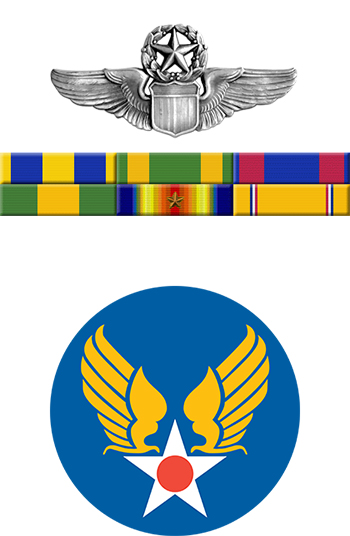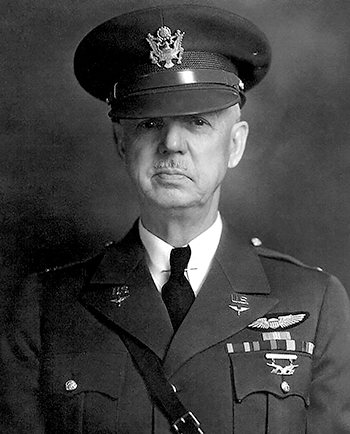
|
Roy C. Kirtland |
 |
|||
| Rank, Service | ||||
Colonel, U.S. Army Air Corps |
||||
| Veteran of: | ||||
|
||||
| Tribute: | ||||
Roy Kirtland was born on May 14, 1874, at Fort Benton, Montana. He enlisted in the U.S. Army during the Spanish-American War on November 8, 1898, and served with Company M, 7th Infantry Regiment, during the Philippine-American War, having been promoted from Private to Battalion Sergeant Major. He was commissioned a 2d Lt of Infantry on August 23, 1901, and served with the Infantry until joining the Aeronautical Division of the U.S. Army Signal Corps in March 1911. Lt Kirtland received Aviator Certificate No. 46 from the Fédération Aéronautique Internationale and Expert Aviator License No. 11 from the Aero Club of America, and then served as Commander of the U.S. Aviation School at College Park, Maryland, from April to June 1911. After serving as a Flight Instructor, he served as Commander of the 1st Aero Squadron from June to November 1913, and then as Adjutant, Supply Officer, Disbursing Officer, and Quartermaster of the Signal Corps Aviation School in San Diego, California, from December 1913 to April 1915. Capt Kirtland served with the U.S. Army Infantry from 1915 to 1917, and then back with the Aviation Section of the U.S. Army Signal Corps. Major Kirtland next served as Commander of Taliaferro Field, Texas, from October to November 1917, followed by service of organizing the first Air Service Mechanics for service in World War I, Commanding the Air Service Camp at Camp Hancock, Georgia, from December 1917 to until he deployed to France as Commander of the 3rd Air Service Mechanics Regiment in April 1918. Col Kirtland next served at the Army Line School in Langres, France, from October 1918 until he returned to the United States in January 1919. His next assignment was as Commander of the Aviation General Supply Depot in Middletown, Pennsylvania, from January to October 1919, followed by service with the 17th Infantry Regiment at Camp Meade, Maryland, from October 1919 until he returned to the U.S. Army Air Service in February 1920. Col Kirtland served as Commander of Rockwell Field, California, from February to August 1920, and he then attended the Army School of the Line at Fort Leavenworth, Kansas, from August 1920 to June 1921. He next attended the General Staff School at Fort Leavenworth from June 1921 to June 1922, followed by service as an Instructor at the General Service Schools at Fort Leavenworth from June 1922 to August 1925. Col Kirtland attended the Army War College in Washington, D.C., from August 1925 to June 1926, and he then served on the War Department General Staff in Washington, D.C., from June 1926 to July 1930. His next assignment was as Commanding Officer of the 2nd Bomb Wing at Langley Field, Virginia, from July 1930 to July 1932, followed by service as Air Officer for the 2nd Corps Area at Governors Island, New York, from July 1932 to April 1933. Col Kirtland served as Air Officer for the 9th Corps Area at the Presidio of San Francisco, California, from April 1933 to July 1936, and then on the Inspector General's staff from July 1936 until his retirement from the U.S. Army Air Corps in 1938. Col Kirtland was recalled to active duty in 1941, and died at Moffett Field, California, on May 2, 1941. He was buried at Fort Rosecrans National Cemetery in San Diego, California. At the time of his death, Col Kirtland was the 3rd oldest pilot in the U.S. Army Air Corps. On February 24, 1942, Albuquerque Army Air Base, New Mexico, was renamed Kirtland Army Air Field in his honor. Once the U.S. Air Force became a separate service, the base was again renamed Kirtland AFB on January 13, 1948. |
||||
|
||||

